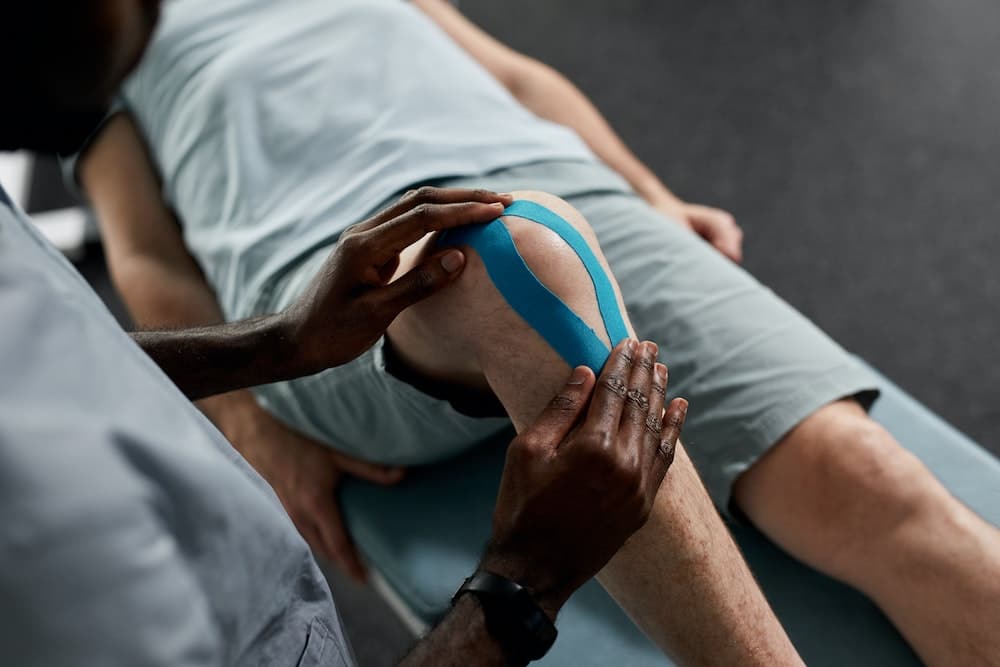As a society obsessed with sports, we’re all too familiar with the injuries players face on the field. In the world of soccer, injuries are commonplace, leading to the search for effective rehabilitation methods. One such technique that is gaining popularity among sports therapists and soccer players alike is underwater treadmill training. This aquatic therapy method has been highlighted in numerous scholarly articles for its potential benefits in aiding recovery from sports-related injuries.
This article, based on information found on trustworthy sources such as Google Scholar and PubMed, will delve into the specifics of underwater treadmill training, examining its benefits and exploring its potential applications in injury rehabilitation for soccer players.
Also to read : How Do Compression Garments Contribute to Injury Prevention in Long-Distance Runners?
The Basics of Underwater Treadmill Training
Before we delve deeper into the potential benefits of underwater treadmill training, it’s essential to understand the basics of this rehabilitation method. Underwater treadmill training is a form of aquatic therapy that uses the natural properties of water—buoyancy, hydrostatic pressure, and resistance—to aid in the recovery and rehabilitation of athletes.
With underwater treadmill training, patients can perform regular running or walking exercises inside a pool. The water provides support, reducing the load on injured joints and muscles. This technique allows athletes to maintain their strength and endurance levels while also reducing the risk of further injury.
Also to read : How to Develop Strategic Play-Calling Skills for Quarterbacks in American Football?
A number of studies available on Google Scholar have shed light on this therapy, indicating that it can be advantageous in the early stages of rehabilitation, primarily when the athlete is still experiencing pain or discomfort from an injury.
The Role of Water in Rehabilitation
Let’s now explore the role that water plays in the rehabilitation process. Water, due to its unique properties, offers a safe and effective medium for recovery and training. When you’re submerged in water, the pressure exerted on your body can help reduce swelling and improve joint position awareness. The buoyancy provides a certain level of support, reducing the impact on your joints and muscles.
Furthermore, the resistance provided by water during underwater treadmill training can help to build muscle strength. Patients can adjust the intensity of their workout by changing their speed, adding a versatile element to their training program.
Numerous studies that can be found on PubMed indicate that aquatic therapy, specifically underwater treadmill training, can help improve the patient’s range of motion, muscular strength, and overall functional abilities.
Underwater Treadmill Training and Soccer Players
We now understand the basics of underwater treadmill training and the role of water in rehabilitation. But how does this specifically apply to soccer players?
Soccer is a high-impact sport that demands a lot from its players. Unfortunately, this often results in injuries, particularly to the lower body. Common injuries include sprains, tears, fractures, and dislocations that can sideline players for weeks or even months.
Underwater treadmill training provides a low-impact environment for soccer players to begin their rehabilitation process soon after injury. This therapy allows them to gradually regain their strength, mobility, and confidence without putting excessive stress on their injured joints and muscles.
Research available on Google Scholar suggests that underwater treadmill training can help soccer players maintain their cardiovascular fitness during the rehabilitation process. This is significant, considering a player’s cardio-respiratory endurance is crucial in soccer.
Case Studies and Research on Underwater Treadmill Training
Multiple case studies and research papers highlight the effectiveness of underwater treadmill training in sports injury rehabilitation. For instance, a research study published on PubMed demonstrated that patients who underwent aquatic therapy after anterior cruciate ligament (ACL) surgery showed improved outcomes compared to those who received traditional physiotherapy.
In another study available on Google Scholar, athletes who used underwater treadmill training after a lower limb injury showed a quicker return to sports. The study concluded that aquatic therapy could play a crucial role in the early stages of rehabilitation, allowing athletes to start therapy sooner.
The consensus among many scholars is that underwater treadmill training provides a safe and efficient approach to rehabilitation, promoting faster recovery, and helping athletes get back to their sports sooner.
Underwater treadmill training is paving the way for a new approach in the field of sports injury rehabilitation. This therapy, supported by numerous studies and case evaluations, is proving to be a promising alternative to traditional rehabilitation methods.
Its benefits in reducing joint and muscle stress, maintaining cardiovascular fitness, and improving functional abilities make it an ideal choice for soccer players dealing with lower limb injuries. However, like any therapy, it must be tailored to each individual’s needs and injury specifics. Hence, it is paramount for athletes to seek advice from a sports therapist or a rehabilitation expert before starting this form of therapy.
Advantages of Underwater Treadmill Training Over Land-Based Therapy
Getting an insight into the specifics of underwater treadmill training, we now compare it to land-based therapy. This comparison will help us understand why many choose the former over the latter, especially in the context of soccer-related injuries.
Land-based therapy, like regular physical therapy, has been the standard mode of rehabilitation for injured athletes for years. It typically involves exercises that aim to improve range motion, muscle strength, and overall mobility. However, for soccer players, especially those with severe lower limb injuries, the weight bearing aspect of land-based therapy might intensify pain and discomfort, potentially prolonging the recovery process.
On the other hand, underwater treadmill training offers several unique advantages. One noteworthy benefit is that it allows athletes to start their rehabilitation sooner. This is mainly because the water offers a low-impact environment that reduces the pressure on injured muscles and joints. Aquatic therapy, particularly underwater treadmill training, can therefore help mitigate the initial pain and discomfort that athletes often experience post-injury.
Moreover, according to a study found on Google Scholar, patients who participated in underwater treadmill training following anterior cruciate ligament (ACL) reconstruction demonstrated better outcomes in terms of strength and mobility compared to those who opted for a land-based approach.
Underwater treadmill training also helps maintain a player’s cardiovascular fitness during the recovery process. When immersed, the heart rate is lower compared to land-based exercises, enabling soccer players to train at a higher intensity with less strain on the heart. This is a significant advantage, as maintaining cardio-respiratory endurance is crucial for soccer players.
Conclusion: Underwater Treadmill Training, A Game-Changer in Sports Rehabilitation
In conclusion, underwater treadmill training is proving to be a game-changer in the field of sports rehabilitation. This aquatic therapy has repeatedly shown in various studies and articles on Google Scholar and PubMed to be a potential alternative to traditional, land-based physical therapy.
One of the key advantages of underwater treadmill training is the reduced impact on joints and muscles, allowing athletes to start their rehabilitation sooner post-injury. The water provides a supportive environment for athletes to regain their strength and mobility without causing further strain or injury.
Moreover, this form of therapy helps maintain cardiovascular fitness during the recovery process, which is crucial for high-intensity sports like soccer. Case studies found on PubMed have validated that underwater treadmill training can expedite the return to sport, promoting quicker recovery times compared to traditional methods.
However, as with any therapy, it’s vital to note that underwater treadmill training should be tailored to the specific needs and conditions of the individual athlete. Not every injury or athlete will benefit in the same way from this form of aquatic therapy. Therefore, it’s essential for soccer players and other athletes to consult with a rehabilitation expert or sports med professional before beginning this kind of therapy regimen.
Given the potential advantages and promising results seen in current research, it’s safe to say that underwater treadmill training will continue to gain momentum in the world of sports rehabilitation. We look forward to seeing more advancements and innovations in this field in the years to come.






